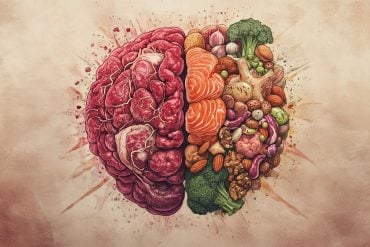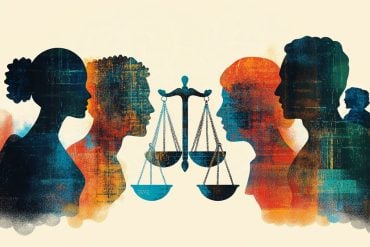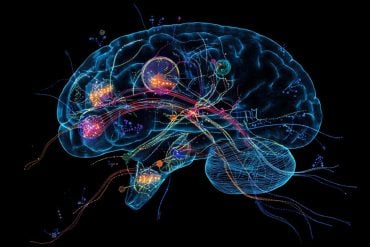Summary: When men and women experience more orgasms in their relationship, they expect and want more. The opposite is true for women who experience fewer orgasms. The findings explain why many women place less emphasis on the importance of orgasms for their sexual satisfaction compared to men.
Source: Rutgers University
A Rutgers-led study finds that when men and women have more frequent orgasms in their relationship, they want and expect more orgasms. The opposite happens when a person climaxes less often.
The study, published in the journal Sex Roles, examines the orgasm gap, a well-established phenomenon in which men climax substantially more often than women during heterosexual sex.
Since women tend to have fewer orgasms than men overall, the findings explain why women put less emphasis on the importance of orgasm for their sexual satisfaction compared to men. The results suggest this cycle of inequality likely repeats rather than improves within a relationship when women who orgasm less often reduce the importance they place on this kind of sexual pleasure.
The researchers surveyed 104 sexually active couples about how much they orgasm, the ideal amount they’d like to and how often they expect people should, and found a gap in these relationships, with men climaxing more often than their female partners.
“Our expectations are shaped by our experiences, so when women orgasm less, they will desire and expect to orgasm less,” said Grace Wetzel, a Rutgers social psychology doctoral student who advocates for orgasm equity to her 10,000 followers on social media. “If women do lower their expectations in this way, the more orgasm inequality may perpetuate in relationships.”

Wetzel says a person’s expectations and desire for an outcome influences their future behavior, shaping how motivated they are to pursue that outcome—in this case—ultimate sexual pleasure.
“The orgasm gap has implications for women’s pleasure, empowerment, sexual satisfaction and general well-being,” said Wetzel, who speaks often on the realities of the sexual-pleasure disparity. “Importantly, this is a gender equality issue. Women are learning to expect and be satisfied with less in their sexual interactions with men.”
The researchers stressed the importance of increasing women’s expectations for and entitlement to orgasm during sex with men in the hope of breaking this cycle for women who wish to have more orgasms in their sexual relationships.
The study was co-authored by Rachel A. Cultice, a Rutgers doctoral student in the Department of Psychology, and Diana Sanchez, a professor of psychology and director of Rutgers’ Close Relationships, Identity and Stigma (CRIS) lab.
About this sexual psychology research news
Author: Press Office
Source: Rutgers University
Contact: Press Office – Rutgers University
Image: The image is in the public domain
Original Research: Closed access.
“Orgasm Frequency Predicts Desire and Expectation for Orgasm: Assessing the Orgasm Gap within Mixed-Sex Couples” by G. M. Wetzel et al. Sex Roles
Abstract
Orgasm Frequency Predicts Desire and Expectation for Orgasm: Assessing the Orgasm Gap within Mixed-Sex Couples
While previous research has established the existence of an orgasm gap between men and women, research exploring this phenomenon within dyadic samples of mixed-sex couples has been limited.
The current study aims to investigate the impact of this orgasm disparity on novel sexual outcomes for couples, including desire and expectation for orgasm.
We conducted secondary data analyses on a sample of 104 sexually active mixed-sex couples using an online Qualtrics panel (Mage = 43.9 years; 94.2% heterosexual; 79.3% White). Cisgender men and women within the couple reported on their sexual satisfaction, orgasm frequency, desired orgasm frequency, expectation for how often people should orgasm (“orgasm expectation”), and perceptions of their partner’s orgasm frequency.
An orgasm gap emerged, and men significantly underreported the size of the orgasm gap in their relationships. In a dyadic path model, men’s and women’s own orgasm frequency positively predicted their desire and expectation for orgasm. Additionally, women’s orgasm frequency predicted men’s orgasm expectation.
This relationship between orgasm frequencies and expectancies may partially explain women’s lower orgasm importance compared to men. A cycle of orgasm inequality within relationships may be perpetuated when women who experience less frequent orgasms lower their desire and expectation for orgasm.
Sex educators, activists, and therapists should work to improve entitlement to sexual pleasure and orgasm, particularly for women who wish to increase their orgasm frequency.






